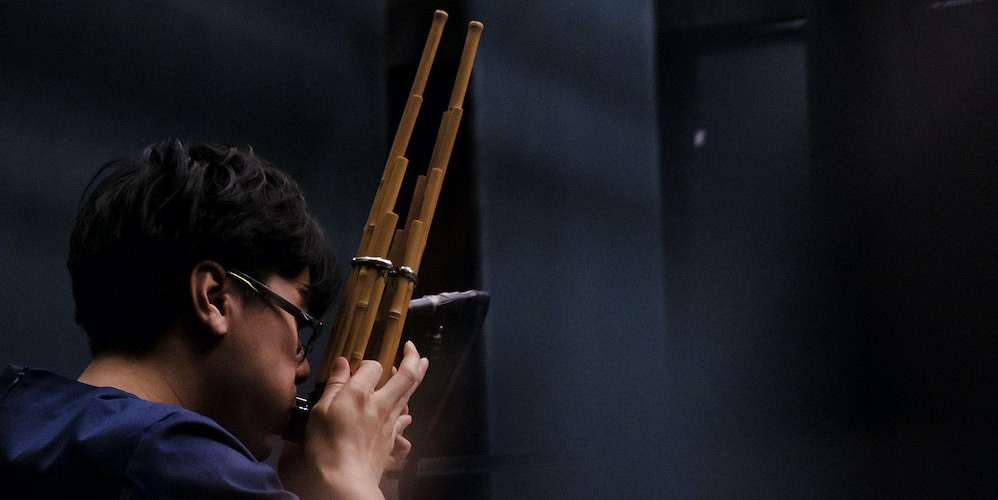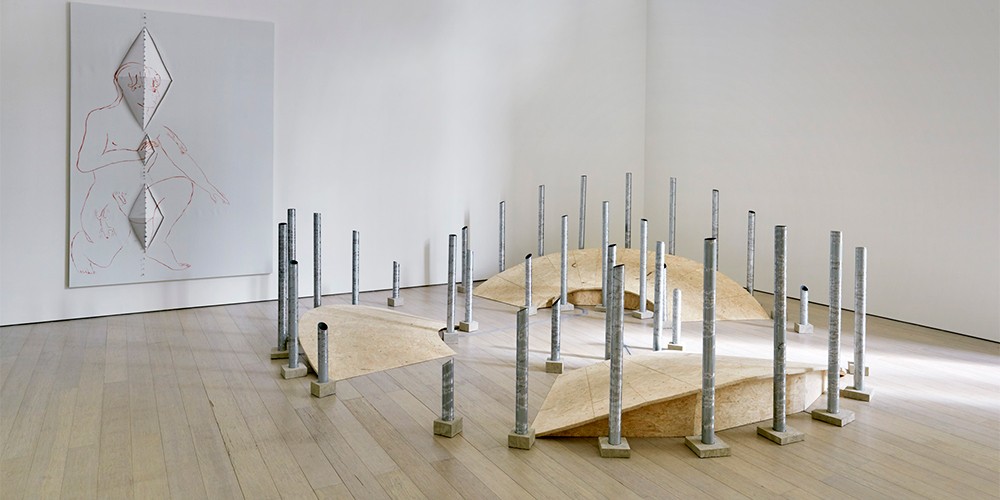Sound Art
The Sound Art Program seeks artists who have a deep engagement with sound as a creative medium and a desire to join a diverse community of artists and musicians. Our students have the freedom to explore work in sculpture, video, and ceramics as well as new media, performance, and conceptual strategies while focusing on the integration of sound with such media.
The two-year, studio-based program is awarded the Visual Arts MFA Degree in association with the Department of Music and the Computer Music Center. The program is highly selective and only offers admissions to three or four students each year. Since the program’s founding in 2013, our alumni have gone on to create major installations at world renowned galleries, score feature films, compose for world-class ensembles and pursue PhD research in art practice, composition, music theory, computer music, and music perception.
Above: Sound Art Professor Jace Clayton visits the studio of Merry Sun to discuss Wayward Bridge, Westward Sun (2023) in advance of the Class of 2023 Visual Arts Thesis Exhibition. © Joel Jares.
Fall 2024 Admissions Deadline
Information Sessions
Visual Arts + Sound Art Tours
The Visual Arts and Sound Art MFA Programs offers weekly tours of our facilities for prospective graduate students given by one of the current MFA students.
For tour dates and times, please visit us here.
Please meet at the LeRoy Neiman Center for Print Studies Gallery in 310 Dodge Hall.

